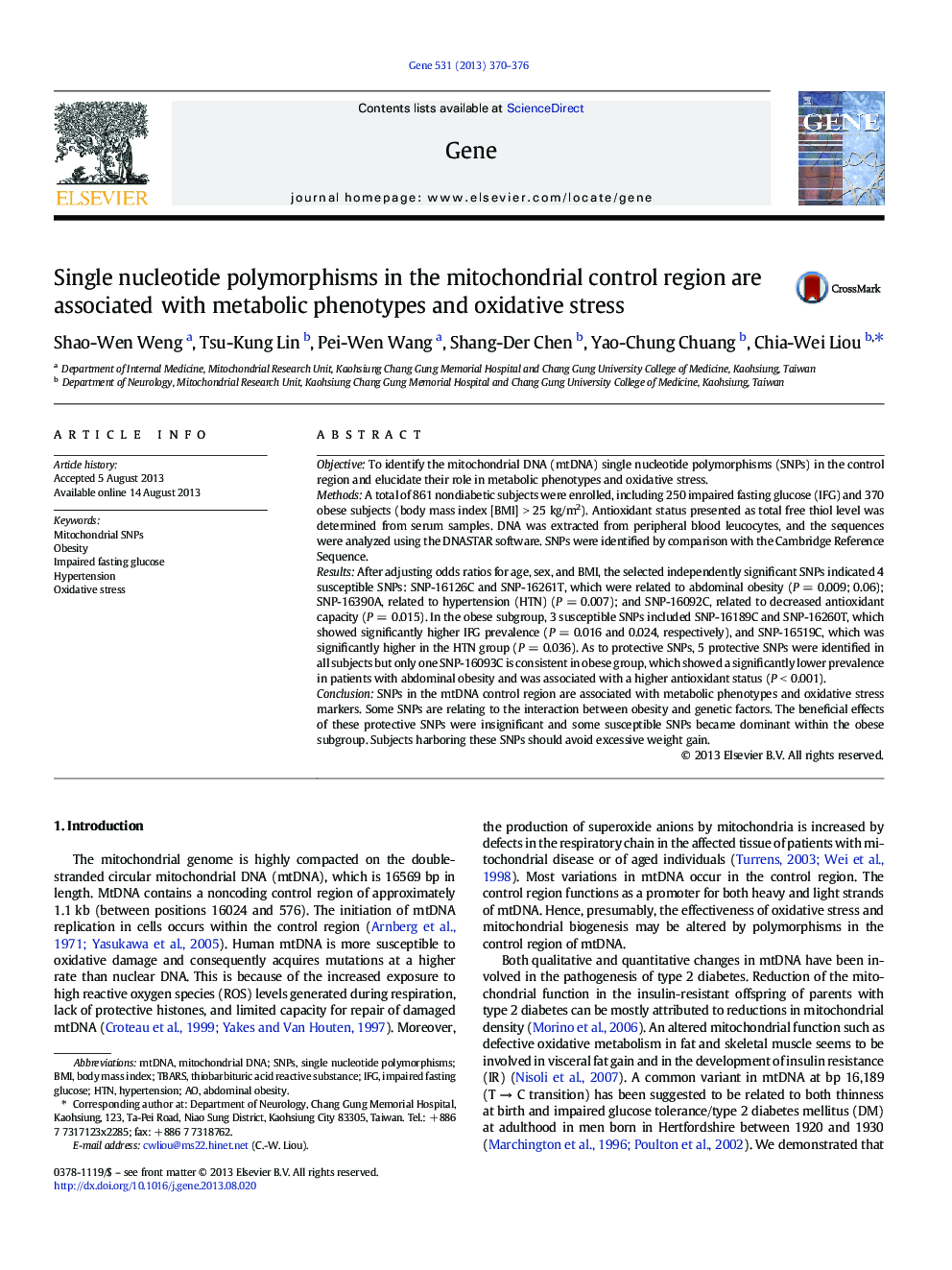| Article ID | Journal | Published Year | Pages | File Type |
|---|---|---|---|---|
| 2816864 | Gene | 2013 | 7 Pages |
•To elucidate the role of mtDNA control region SNPs in in metabolic phenotypes•SNPs are relating to abdominal obesity, DM, HTN and oxidative stress markers.•Subjects harboring these SNPs should avoid excessive weight gain.
ObjectiveTo identify the mitochondrial DNA (mtDNA) single nucleotide polymorphisms (SNPs) in the control region and elucidate their role in metabolic phenotypes and oxidative stress.MethodsA total of 861 nondiabetic subjects were enrolled, including 250 impaired fasting glucose (IFG) and 370 obese subjects (body mass index [BMI] > 25 kg/m2). Antioxidant status presented as total free thiol level was determined from serum samples. DNA was extracted from peripheral blood leucocytes, and the sequences were analyzed using the DNASTAR software. SNPs were identified by comparison with the Cambridge Reference Sequence.ResultsAfter adjusting odds ratios for age, sex, and BMI, the selected independently significant SNPs indicated 4 susceptible SNPs: SNP-16126C and SNP-16261T, which were related to abdominal obesity (P = 0.009; 0.06); SNP-16390A, related to hypertension (HTN) (P = 0.007); and SNP-16092C, related to decreased antioxidant capacity (P = 0.015). In the obese subgroup, 3 susceptible SNPs included SNP-16189C and SNP-16260T, which showed significantly higher IFG prevalence (P = 0.016 and 0.024, respectively), and SNP-16519C, which was significantly higher in the HTN group (P = 0.036). As to protective SNPs, 5 protective SNPs were identified in all subjects but only one SNP-16093C is consistent in obese group, which showed a significantly lower prevalence in patients with abdominal obesity and was associated with a higher antioxidant status (P < 0.001).ConclusionSNPs in the mtDNA control region are associated with metabolic phenotypes and oxidative stress markers. Some SNPs are relating to the interaction between obesity and genetic factors. The beneficial effects of these protective SNPs were insignificant and some susceptible SNPs became dominant within the obese subgroup. Subjects harboring these SNPs should avoid excessive weight gain.
